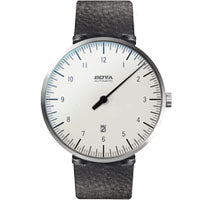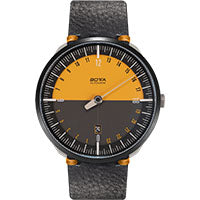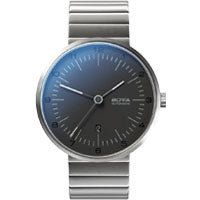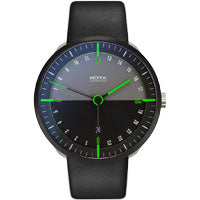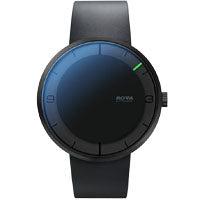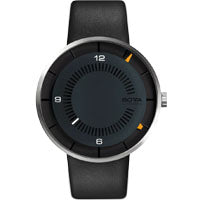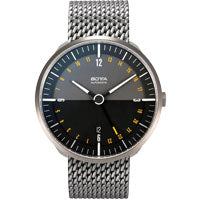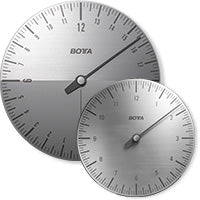Are design awards a real criterion for quality? Which awards are important, and what types of design awards are there?
Here you will find well-founded answers and assessments.
The purpose of design awards
Design awards were created to recognize products with high design quality and high utility, and to make it easier for customers to choose particularly high-quality products.
Qualifying for a design award is therefore not just about good looks, but also about good functionality and generally high product utility. The ecological factor is also playing an increasingly important role.
In principle, design awards are a supplement to classic product tests, such as those that Stiftung Warentest has been awarding for many decades. While Stiftung Warentest primarily evaluates practical functionality, workmanship and durability, design awards focus less on technology and more on aesthetics and the overall product language. However, there is a high degree of overlap in the evaluation criteria.
The “good form” and the “good usability”
Good design is much more than just an aesthetic appearance. It still includes good functionality and good handling. Depending on the type of product, this includes various forms of functionality. Classically, these are holding ergonomics, operating ergonomics, clarity of operation, etc. The proven BAUHAUS quality criteria also come into play here.
In general, the design quality and the level of innovation (how much real innovation a product brings) are always evaluated.
The more electronic or virtual a product is, the more important additional aspects become, such as interaction design, usability (usability, comprehensibility) and the design of the human-machine and machine-human interfaces.
Different categories for design awards
There are now a whole host of different award categories.
Some examples:
- Product design (includes design for machines and technical devices but also consumer design, i.e. the design of products for the end user. This category also includes awards for wristwatches.)
- Graphic design (classic printed matter and increasingly electronic design, digital graphics, etc.)
- Brand development (topics such as corporate design etc. are evaluated here)
- Interior design (furniture, furnishings, home accessories etc.)
- Public design (the design of public spaces and squares or furniture for public spaces)
- Automotive design (cars, trucks, commercial vehicles, buses and trains)
- and many other areas in which design, functionality and usability are essential quality factors

High demands on the jury
The large number of quality criteria makes it clear that a whole team of experts is needed to assess comprehensive design quality. Ideally, the jury of a design award is made up of many independent and experienced specialists and experts, who then discuss the individual products together and give their individual assessments.
The evaluation process for a design award
Depending on the institution, the assessment process can be very different. Usually, each individual product is first presented to the jury and briefly explained. The device or application is then examined, tested and discussed by the jurors. There are usually several rounds in the form of a pre-selection in which the majority of the submissions are already sorted out.
The products that qualify for the final selection are then discussed again in detail and evaluated individually.
The awards often have different performance classes, e.g. bronze, silver and gold. But there are also prizes for high or highest design quality. There are also special awards such as "The Best of the Best", awards for design teams or "recognitions" or special awards for young talent. The range of individual awards is enormous and now sometimes confusing.
The evaluation criteria for design awards
According to which criteria are awards given, and what values are guaranteed to the user through such an award? Both depend largely on the focus of the respective design award.
Here is an exemplary collection of criteria that play a key role in the prestigious design awards:
- Justification for existence: Does this product make sense in this form?
- Innovativeness: how new, innovative and forward-looking is the concept behind the product?
- Functionality: how well and reliably does the device work?
- Ergonomics: how good, safe and easy is it to use?
- Design quality: how well is the product designed?
- Product language: what symbolic and semantic messages does the product convey beyond its practical function?
- Sustainability: how high-quality and durable is the product?
- Ecology: where and how and from which raw materials and with how much energy was the product produced in relation to its lifetime?
- Social responsibility: under what conditions was the product produced?
- What extraordinary benefit does the product bring to society
The Value of Design Awards
Similar to an award from Stiftung Warentest, a design award is intended to make it easier for consumers to select and compare products.
Here, too, it is assumed that a team of experts will examine the quality of a product in detail and comprehensively, thus relieving the consumer of a great deal of research and assessment work. It is not uncommon for the institute to have test and measurement methods at its disposal that are not available to the normal user or consumer.
This applies in principle to all renowned design awards. The award from a well-known testing institute or association is to be seen as a valid quality criterion.
Not every award is valued equally
On the one hand, the various awards differ according to themes and product types, and on the other hand, there are naturally also large differences in the evaluation effort and the motivation for awarding a design award.
Awards given at events such as trade fairs or other events are of relatively little importance. Large institutions that specialize in design awards, such as the iF Award in Hanover, the Reddot Design Award in Essen, the Good Design Award in Chicago, or institutions that are state- or semi-state-funded, such as Focus Open, which awards the international state prize of the state of Baden-Württemberg, are rated relatively highly.

Which design awards do exist?
Here is a short list of major design awards:
- Reddot Design Award, Essen: All types of capital and consumer goods.
- iF Design Award, Hanover: mainly technical products and capital goods
- Focus Open, Baden-Württemberg: All types of products and special awards.
- Good Design Award, Chicago: All types of products.
- "Bundespreis" Product Design: All types of products.
- German Design Award: All types of products
Design awards are usually given in different categories. For example, awards for machinery and equipment, awards for household appliances, awards for watches and jewelry, etc.
Can you win cash prizes with awards, or do costs also incur?
Both are possible. As a rule, there are participation fees and, in the case of an award, additional costs for the use of the corresponding seal.
The amounts are usually in the four-digit range and can even be five-digit depending on the scope. The case of cash prizes being offered is relatively rare, because ultimately both these prize moneys and the entire event have to be financed.

This means that design awards can quickly become very expensive and are therefore often only worthwhile for larger companies whose turnover is in reasonable proportion to the expected award costs.
Here, state or semi-state design awards such as the “Focus Open” have the advantage that they do not have to be financed purely through fees, but are also subsidized by the state. This makes such awards more affordable for the participants and reduces the commercial aspect of such awards.
There are special awards for students or startups that are inexpensive or even cost-neutral. They are often financed by larger institutions or the state and serve to promote young talent.
Conclusion: Design awards are always a seal for quality. However, depending on the organizer of the design award, there are big differences in the importance and value of an award. Renowned international design awards are generally valued more highly than regional or local awards.
Unfortunately, there has been a trend towards greater commercialization of design awards in recent years. As a result, the significance of such awards sometimes suffers.
However, the renowned and established design awards can still be seen as a seal of approval and therefore also as a sign of quality.

